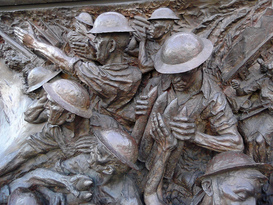
Wednesday morning we have an hour in the computer lab. During this time, I'd like you to find information related to the story using the Virtual Library databases or the internet. Topics to search could be:
-prison life in 1930's
-child evacuees during WW2
-WW2 nursing
-WW2 combat
-The Dunkirk Retreat
-Scepticemia
-The Balham Street Station Bombing
-The Blitzkreig
Post your findings (in your own words - no cutting and pasting!) here. Reference your sources informall
